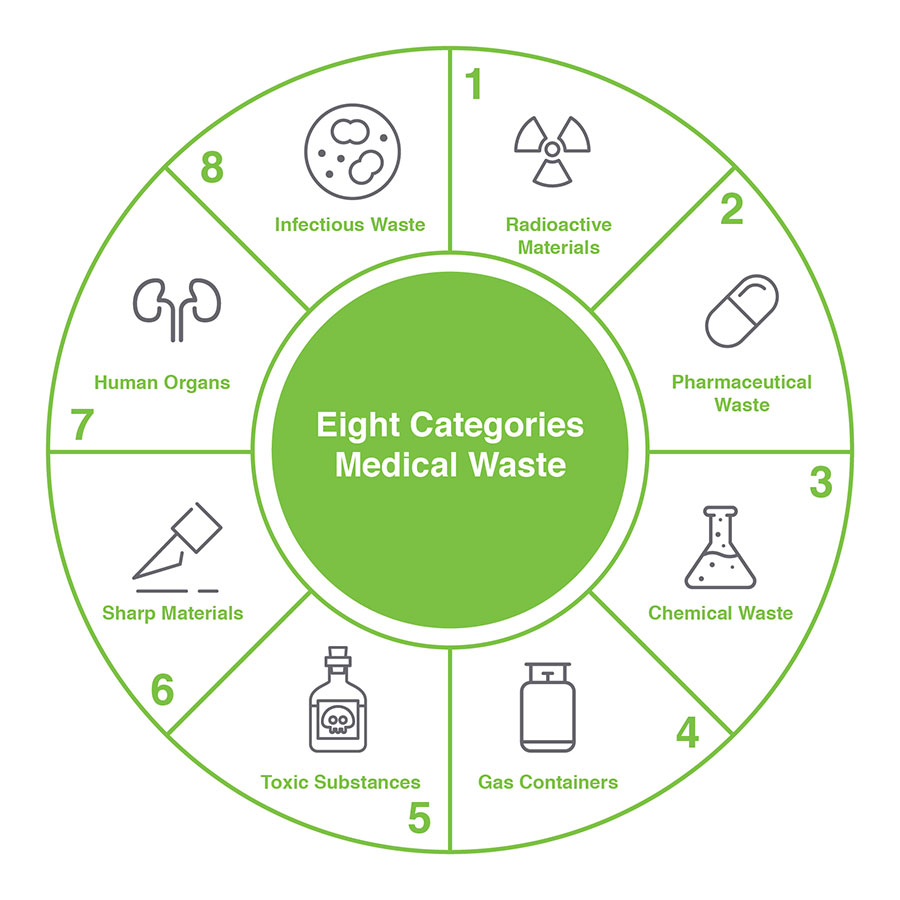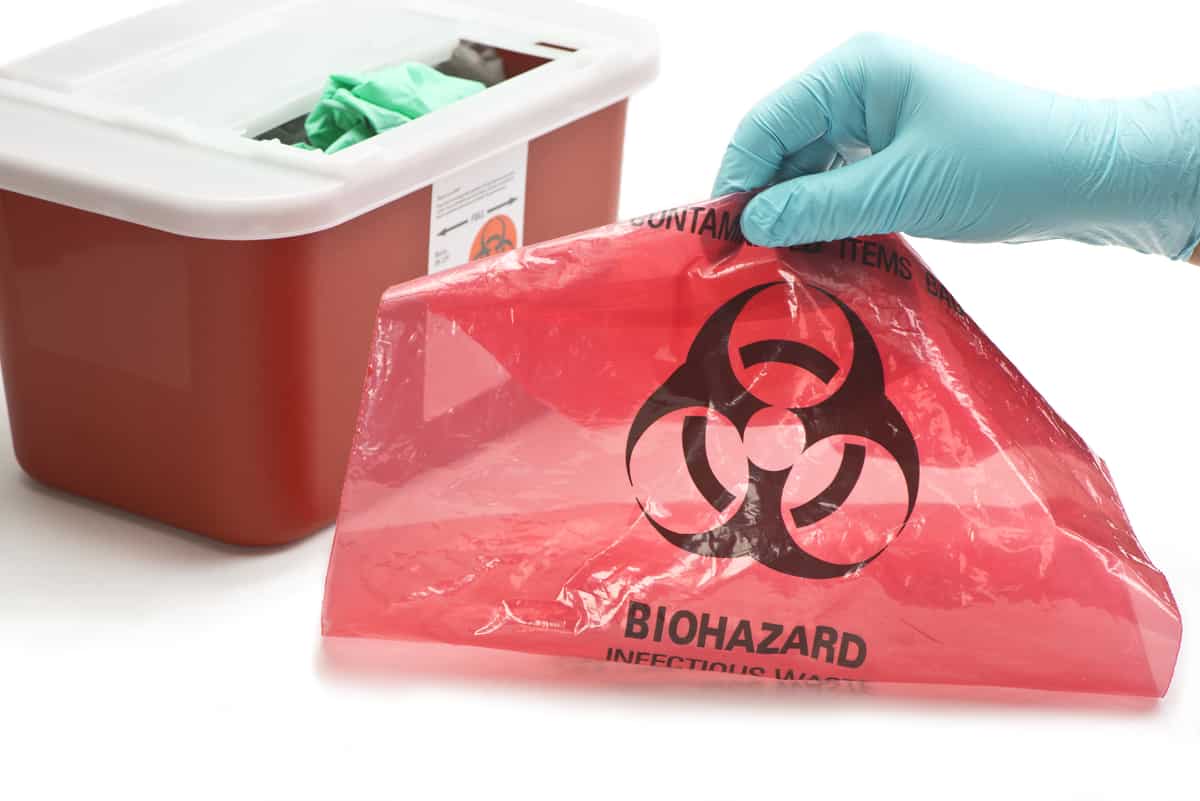Past Cleanup: Ensuring Safety with Expert Medical Waste Removal
Past Cleanup: Ensuring Safety with Expert Medical Waste Removal
Blog Article
Minimize Prices and Optimize Safety And Security: Effective Medical Garbage Disposal Methods
Efficient medical waste disposal strategies are crucial for healthcare centers to optimize and reduce costs safety. With the expanding concern for environmental sustainability and the enhancing number of laws bordering waste management, it is important for healthcare companies to embrace efficient and certified techniques. By applying appropriate segregation and categorization, efficient product packaging and labeling, secure transport and handling, effective treatment and disposal approaches, and compliance with regulative standards, health care facilities can make certain the risk-free and responsible monitoring of medical waste. In this conversation, we will discover each of these methods carefully, giving insights and sensible suggestions for medical care professionals to maximize their waste disposal procedures.

Correct Segregation and Categorization
Appropriate segregation and classification are critical parts of effective medical waste disposal techniques, making sure the safety and security of medical care employees, the general public, and the setting - medical waste removal. medical waste disposal services with WasteX. By separating different kinds of clinical waste at the point of generation, medical care centers can decrease the danger of cross-contamination and prospective harm to individuals and communities
One of the vital aspects in proper partition is the identification and category of medical waste. This involves classifying waste right into various groups, such as transmittable, harmful, radioactive, or pharmaceutical waste. Each group requires details handling, storage, and disposal approaches to stop any type of negative impacts on human health and the environment.
In addition, correct segregation additionally includes making use of color-coded containers and labels to plainly determine and set apart the various kinds of clinical waste. This helps medical care workers and waste administration employees to easily acknowledge and take care of the waste appropriately. Red containers might be made use of for infectious waste, while yellow containers may be assigned for unsafe waste.
Along with segregation, appropriate classification also involves the right product packaging and control of medical waste. This guarantees that waste is safely saved and transferred without presenting any kind of threats to people or the environment. Using puncture-resistant and watertight containers, in addition to effectively securing and classifying them, helps to stop any type of unexpected exposure or release of harmful materials.
Reliable Packaging and Labeling
Efficient packaging and labeling play a vital function in making sure the secure and efficient disposal of medical waste. Proper packaging is important to avoid leakage, damage, or splilling throughout transportation and handling. It helps to reduce the risk of contamination and protects medical care employees, waste administration workers, and the environment from potential threats.
Clinical waste must be packaged in durable and leak-proof containers that are immune to pierce and breakage. These containers need to be appropriately sealed to prevent any kind of leak. Furthermore, the packaging needs to have the ability to endure the conditions of transport, including temperature variants and rough handling.
Labeling is just as essential as it provides critical info about the materials of the waste and any type of prospective threats connected with it. The labels must include the name of the medical care facility, the kind of waste, and any type of unique handling instructions. Clear and standard labeling makes certain that waste administration employees can quickly recognize and deal with the waste suitably.
Effective product packaging and labeling likewise aid in the correct segregation and categorization of clinical waste. Clear labeling enables for easy recognition of different waste streams, such as contagious waste, sharps, or pharmaceutical waste. This aids in improving the disposal procedure and guaranteeing that the waste is dealt with or thrown away in accordance with regulative standards.
Safe Transport and Handling
Guaranteeing the risk-free transport and handling of medical waste is of utmost value in order to protect against any prospective wellness and ecological risks. Medical waste, such as sharps, polluted products, and pharmaceutical waste, must be correctly packaged and managed to minimize the risk of exposure to dangerous materials and pathogens.
Carrying clinical waste calls for conformity with rigorous regulations and guidelines set by local authorities and ecological companies. These regulations aim to protect the health and wellness and security of workers associated with waste administration and stop the launch of harmful products right into the atmosphere.
To make sure risk-free transport, medical waste ought to be put in leak-proof and puncture-resistant containers that are properly sealed and labeled. These containers need to be safeguarded in such a way that protects against spills or damage during transit (medical waste removal near me). In addition, it is critical to make use of specific automobiles geared up with appropriate safety attributes to transport clinical waste. These vehicles should have ample air flow and be developed to stop leak or contamination.
Dealing with clinical waste additionally requires proper training and adherence to security methods. Employees involved in the handling of medical waste must put on appropriate individual safety tools (PPE) such as masks, dress, and handwear covers to minimize the threat of direct exposure. They should also adhere to strict health techniques to avoid the spread of infections and make certain the safe disposal of waste.
Effective Therapy and Disposal Approaches
Applying suitable treatment and disposal approaches is critical in managing medical waste successfully and reducing possible wellness and ecological dangers. Clinical waste, which includes sharps, contagious materials, chemicals, and pharmaceuticals, can pose significant hazards otherwise taken care of and dealt with correctly. There are several therapy and disposal approaches readily available that stick to regulative guidelines and advertise secure methods.
One common technique is incineration, which includes shedding the waste at heats. Incineration is reliable in damaging microorganisms and decreasing the volume of waste, however it can launch dangerous toxins right into the air otherwise appropriately regulated. It is crucial to use contemporary incinerators geared up with emission control technologies.
An additional approach is autoclaving, which makes use of heavy steam and pressure to sanitize the waste. Autoclaving works in eliminating virus and minimizing the volume of waste, but it calls for mindful tracking and maintenance to ensure correct performance. The sanitized waste can then be securely thrown away in a garbage dump.
Chemical treatment is an additional choice, which involves using anti-bacterials or other chemicals to counteract browse around this web-site microorganisms. This method is commonly utilized for liquid waste, such as research laboratory specimens. It is important to utilize appropriate chemicals and adhere to proper treatments to ensure reliable treatment and stop environmental contamination.

Compliance With Regulatory Standards
Sticking to regulative standards is vital in making certain proper conformity with medical waste disposal techniques. These standards are put in area to safeguard public health and wellness, prevent environmental contamination, and keep workplace security. Conformity with governing guidelines is important for healthcare centers, as non-compliance can lead to fines, fines, and reputational damages.
Governing standards lay out the proper handling, storage space, transport, and disposal of medical waste. These standards additionally address the partition of various waste streams, such as sharps, transmittable waste, and pharmaceutical waste.
To keep conformity, medical care centers must establish extensive waste administration programs that include staff training, regular audits, and recurring surveillance. It is necessary to keep current with any kind of updates or modifications to regulative guidelines, as practices might progress gradually. By staying informed and implementing correct methods, health care facilities can reduce the possibility for regulative site here violations and protect the health and wellness of their personnel, patients, and the bordering neighborhood.
Conclusion
In verdict, carrying out effective clinical garbage disposal techniques is crucial for taking full advantage of and minimizing prices safety. Correct segregation and classification, effective product packaging and labeling, risk-free transport and handling, and efficient therapy and disposal methods are crucial steps to make certain compliance with governing guidelines. medical waste removal services. By adhering to these methods, medical care facilities can shield the environment and public wellness while also minimizing economic worries related to clinical waste monitoring
By executing correct partition and categorization, effective product packaging and labeling, safe transportation and handling, read this efficient therapy and disposal methods, and compliance with regulative standards, medical care facilities can guarantee the secure and responsible monitoring of clinical waste. Red containers may be utilized for infectious waste, while yellow containers might be marked for hazardous waste.
Clear and standardized labeling makes sure that waste monitoring employees can easily identify and deal with the waste properly. (medical waste disposal services with WasteX)
Clear labeling allows for easy recognition of various waste streams, such as infectious waste, sharps, or pharmaceutical waste. These standards additionally attend to the segregation of different waste streams, such as sharps, transmittable waste, and pharmaceutical waste.
Report this page